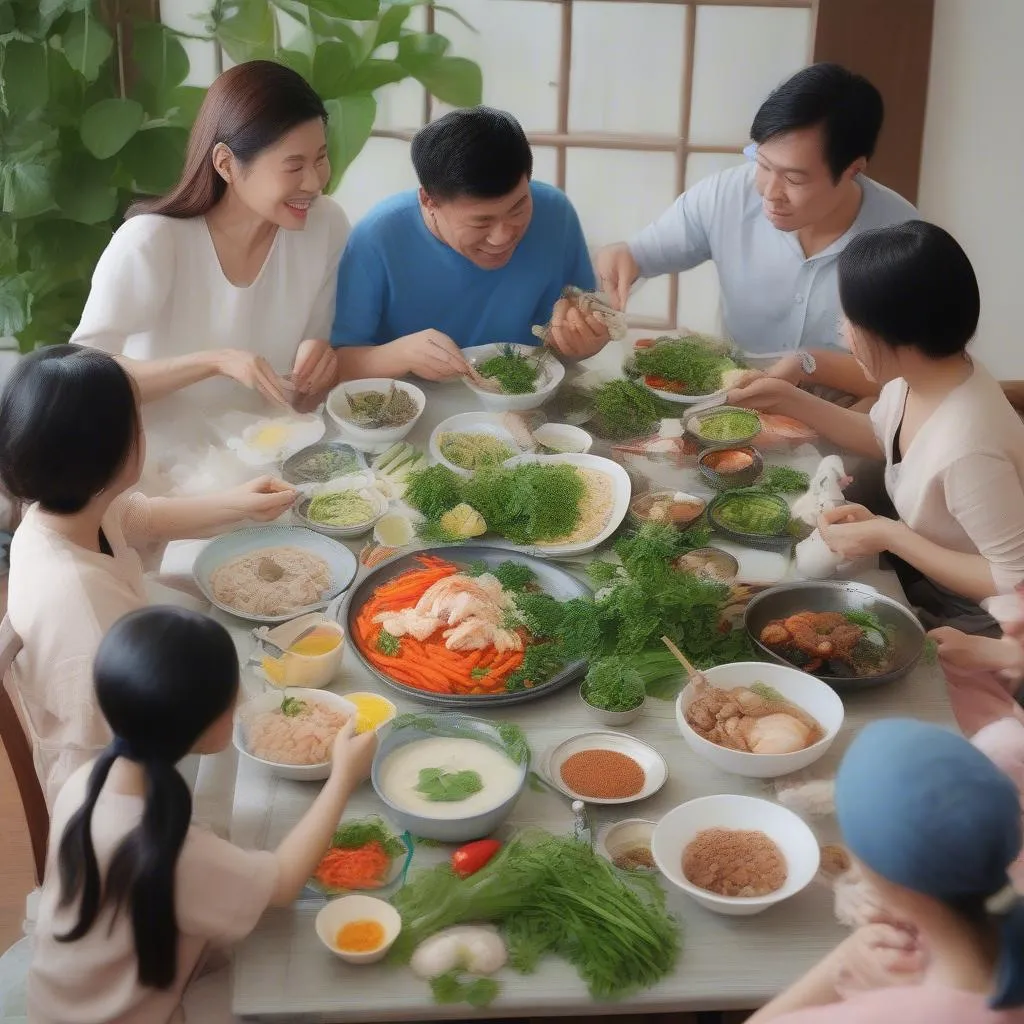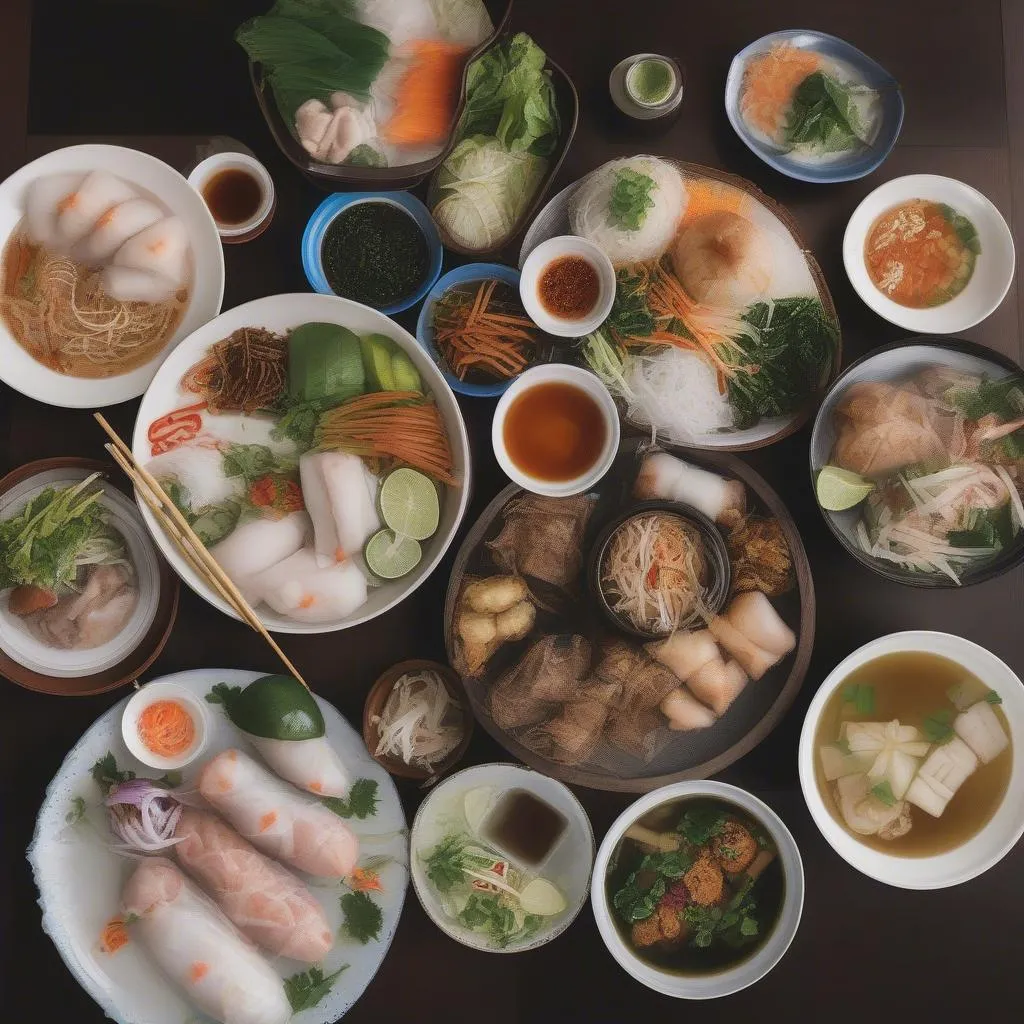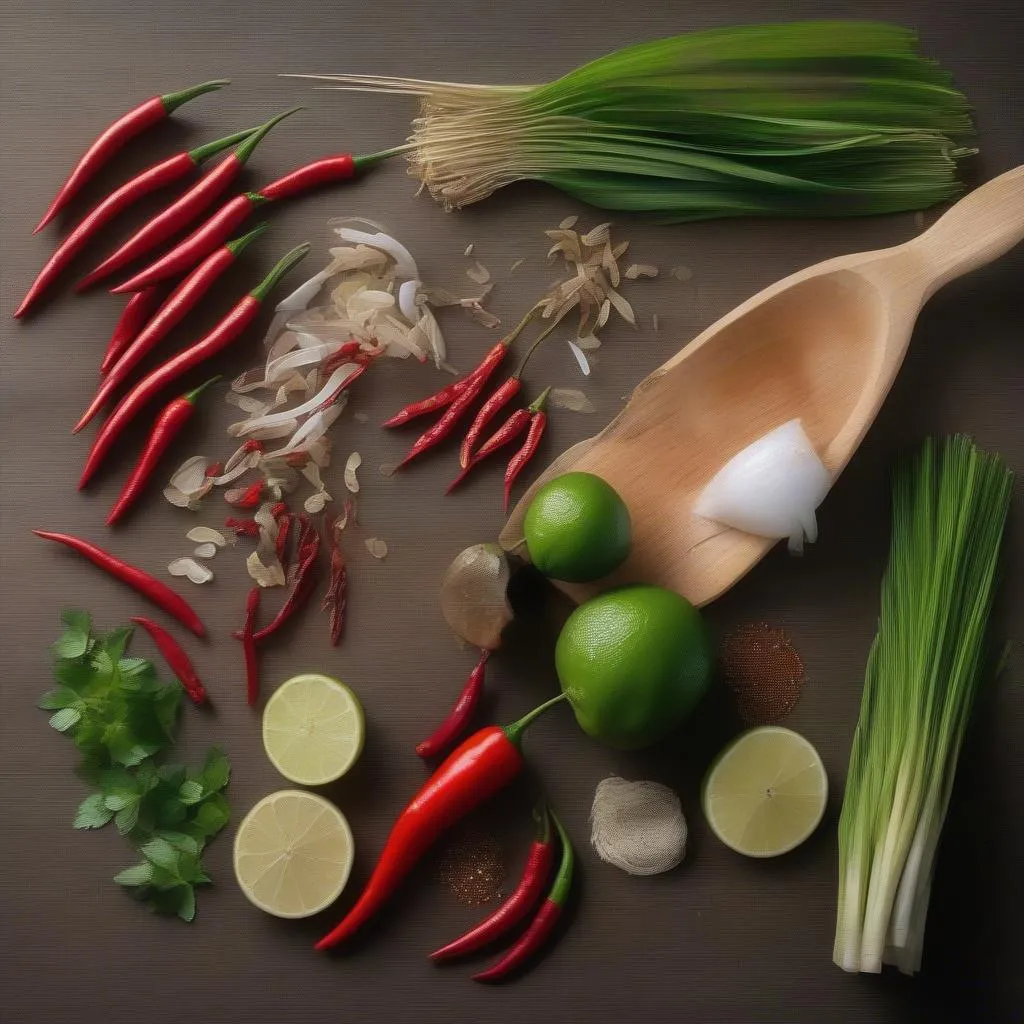Have you ever wondered what a typical Vietnamese family eats on a daily basis? While it might seem like a simple question, it reveals a world of rich culinary traditions, cultural influences, and a deep appreciation for fresh, local ingredients. Join me as we explore the diverse world of everyday meals in Vietnam, delving into the flavors, ingredients, and cultural significance that make Vietnamese cuisine so unique.
Understanding Vietnamese Family Meals
A Culinary Reflection of Vietnamese Culture
Vietnamese cuisine is known for its balance of flavors, often described as “sweet, sour, salty, and spicy.” This harmony reflects a deep cultural emphasis on balance and harmony. Food is not just sustenance; it’s a shared experience that brings families together and strengthens community bonds.
Daily Rituals and the Importance of Freshness
Imagine a bustling Vietnamese kitchen, filled with the fragrant aromas of fresh herbs and spices. This scene encapsulates the essence of Vietnamese cooking, where fresh ingredients are the cornerstone of every meal. From the vibrant green hues of leafy vegetables to the vibrant colors of fresh seafood, each ingredient plays a crucial role in creating a symphony of flavors.
For example, a typical Vietnamese family meal might feature  A Vietnamese Family Meal.
A Vietnamese Family Meal.
The Role of Family Meals in Vietnamese Culture
Family meals are a cornerstone of Vietnamese culture, offering a time for loved ones to connect and share stories. In bustling city centers like Ho Chi Minh City, families often gather around the dinner table after a long day, enjoying a meal prepared with care and love.
A Glimpse into a Typical Vietnamese Daily Menu
Breakfast: A Light and Nutritious Start
A typical Vietnamese breakfast is often light and nutritious, designed to energize the body for the day ahead. Common breakfast options include:
- Pho: A steaming bowl of fragrant broth, often topped with thin slices of beef or chicken, rice noodles, and fresh herbs.
- Bánh Mì: A crusty baguette filled with savory ingredients like grilled pork, pickled vegetables, and a dollop of pate.
- Xôi: A sweet and sticky rice dish, often flavored with coconut milk, mung beans, and a variety of toppings.
Lunch: A Quick and Flavorful Meal
Lunchtime is a quick affair for many Vietnamese families, often enjoyed at home or at local food stalls. Common lunch options include:
- Cơm tấm: Broken rice, often served with grilled pork, fried eggs, and pickled vegetables.
- Bún chả: Vermicelli noodles served with grilled pork patties, a refreshing dipping sauce, and fresh herbs.
- Gỏi cuốn: Fresh spring rolls filled with rice paper, rice noodles, vegetables, and various fillings, often served with a dipping sauce.
The diverse flavors and textures of a typical Vietnamese lunch can be seen in  Assortment of Vietnamese Lunch Dishes.
Assortment of Vietnamese Lunch Dishes.
Dinner: A Time to Gather and Celebrate
Dinner is often a more elaborate meal, enjoyed by the entire family. Vietnamese dinners often feature:
- Carries: A variety of stews and braises, often featuring meat, seafood, and vegetables.
- Stir-fries: Quick and flavorful dishes, typically featuring vegetables, tofu, or meat.
- Seafood: A popular choice, especially in coastal regions, with dishes like steamed fish, grilled shrimp, and fried squid.
Culinary Delights: Exploring Vietnamese Flavors
The Essential Ingredients of Vietnamese Cuisine
Vietnamese cuisine is characterized by its use of fresh, local ingredients, each contributing to the distinct flavors that define Vietnamese food. Some key ingredients include:
- Fish Sauce: A fermented fish condiment, used to add a savory and umami flavor to many dishes.
- Chilli Peppers: A ubiquitous ingredient, used to add a fiery kick to dishes.
- Lemongrass: A fragrant herb, used to infuse dishes with a citrusy and herbaceous aroma.
- Galangal: A ginger-like root, used to add a distinctive, slightly peppery flavor.
- Lime: A tart citrus fruit, used to brighten dishes and add a refreshing acidity.
The unique blend of flavors in Vietnamese cuisine is evident in  Essential Ingredients of Vietnamese Cuisine.
Essential Ingredients of Vietnamese Cuisine.
The Importance of Balance and Harmony
One of the defining characteristics of Vietnamese cuisine is its emphasis on balance. Each ingredient, from the savory fish sauce to the sweet and tart lime, plays a role in creating a symphony of flavors. This balance reflects a cultural appreciation for harmony and a belief that all things should be enjoyed in moderation.
Traveling Through Vietnamese Cuisine
A Culinary Adventure Awaits
For travelers seeking an authentic culinary experience, Vietnam is a paradise for food lovers. From the bustling street food stalls of Hanoi to the vibrant markets of Ho Chi Minh City, every corner offers a unique glimpse into Vietnamese cuisine.
Discovering the Local Flavors
One of the best ways to immerse yourself in Vietnamese culture is to try the local specialties. Each region in Vietnam has its own unique culinary traditions, with dishes that reflect the local ingredients and cultural influences.
Embracing the Cultural Exchange
For travelers seeking a deeper understanding of Vietnamese culture, engaging with the locals through food is an invaluable experience. Sharing a meal with a Vietnamese family provides a glimpse into their daily lives, culinary traditions, and the importance of food in their culture.
Tips for Planning Your Culinary Journey
Embrace the Street Food Scene
Don’t be afraid to explore the vibrant street food scene. From banh mi stalls to pho shops, the streets of Vietnam are a culinary wonderland.
Seek Out Local Specialties
Ask locals for recommendations on their favorite dishes. Local knowledge can lead you to hidden gems and authentic culinary experiences.
Attend a Cooking Class
Immerse yourself in Vietnamese cuisine by taking a cooking class. Learn the techniques, ingredients, and cultural significance behind traditional Vietnamese dishes.
Experience the Vibrant Markets
Visit local markets to witness the bustling energy of Vietnamese food culture. Sample fresh produce, spices, and other local ingredients.
Embrace the Unexpected
Be open to trying new dishes and flavors. Vietnamese cuisine is full of surprises, with dishes that challenge conventional palates and expand your culinary horizons.
Travelcar.edu.vn: Your Gateway to Vietnamese Cuisine
For those interested in exploring the culinary landscape of Vietnam, Travelcar.edu.vn offers a wealth of resources and information. From articles and blog posts to interactive maps and travel guides, Travelcar.edu.vn is your one-stop shop for planning your culinary adventure.
Frequently Asked Questions
What is the best time to visit Vietnam for food?
The best time to visit Vietnam for food is during the harvest season, typically from September to November, when fresh produce and seafood are at their peak.
What are some must-try Vietnamese dishes?
Some must-try Vietnamese dishes include pho, banh mi, bun cha, goi cuon, and com tam.
Are there any special dietary restrictions to be aware of?
Vietnamese cuisine often uses fish sauce, which is not suitable for vegetarians or those with shellfish allergies. It is always best to inform your server of any dietary restrictions or allergies.
What are some cultural etiquette tips for dining in Vietnam?
It is considered polite to use chopsticks and spoons when eating in Vietnam. It is also customary to offer food to others, even if you are full.
Conclusion
Exploring the everyday meals of Vietnamese families offers a window into their culture, values, and culinary traditions. From the vibrant street food stalls to the bustling markets, Vietnam is a paradise for food lovers, with dishes that tantalize the senses and evoke the essence of the country’s vibrant culture. So, pack your appetite and embark on a culinary adventure through the heart of Vietnam.